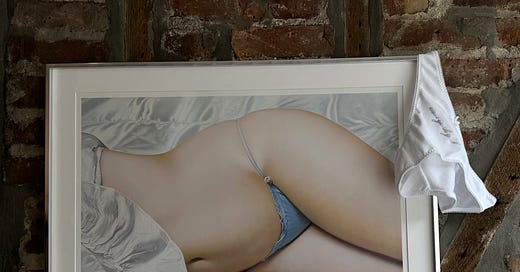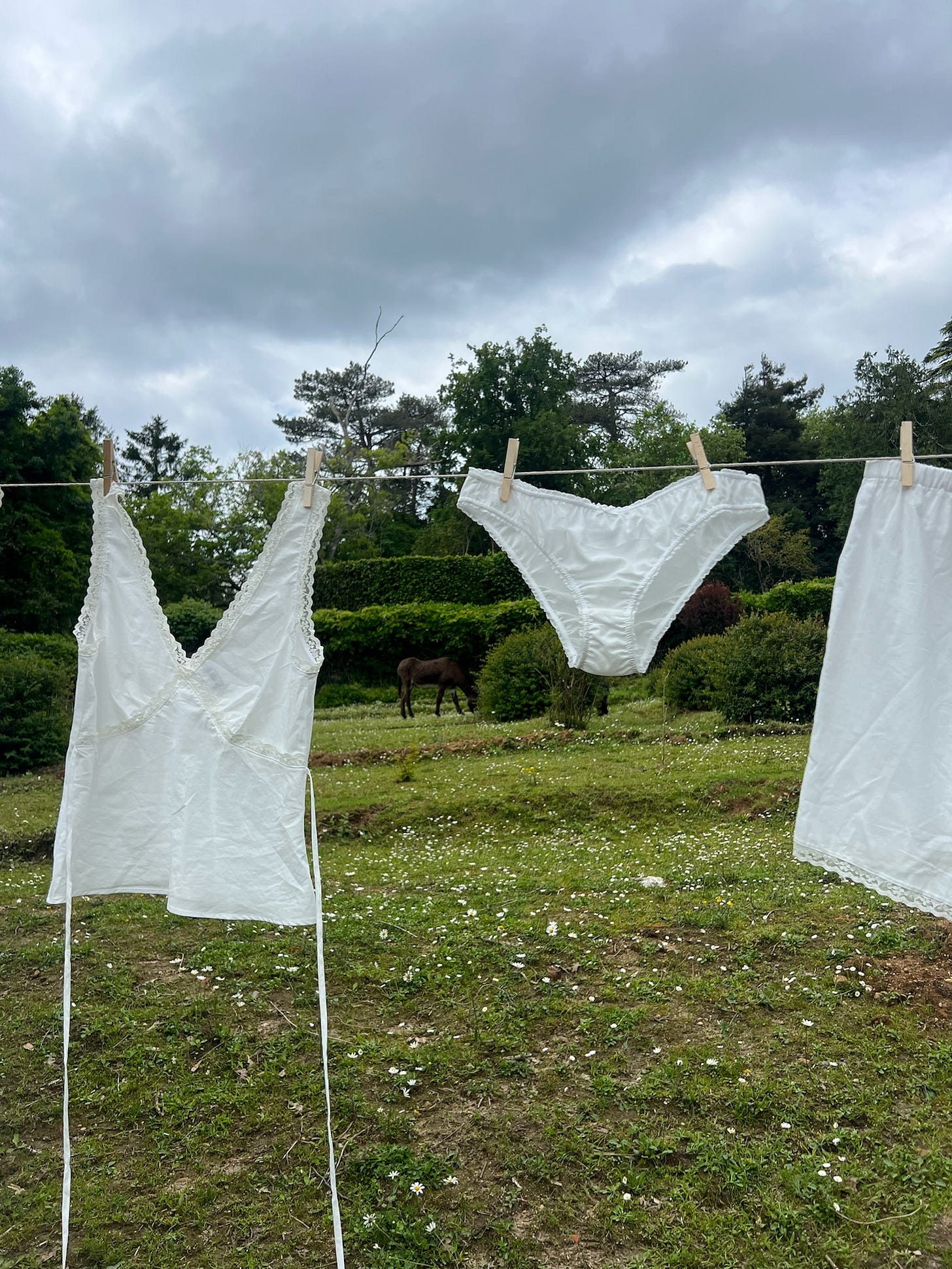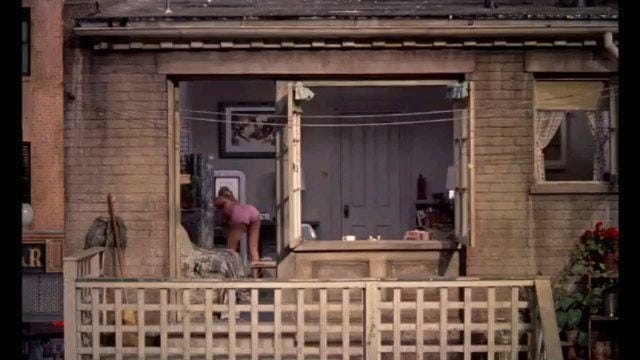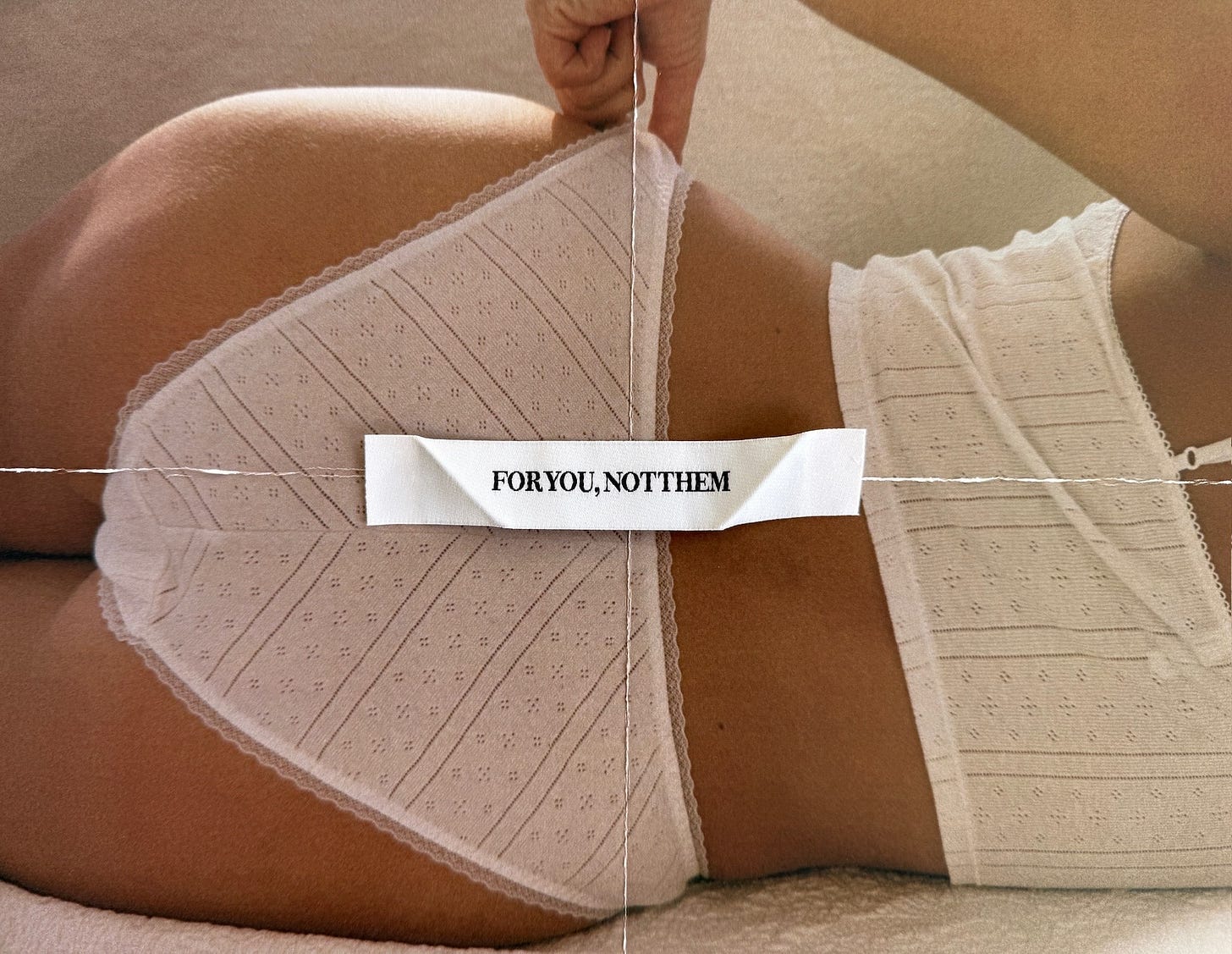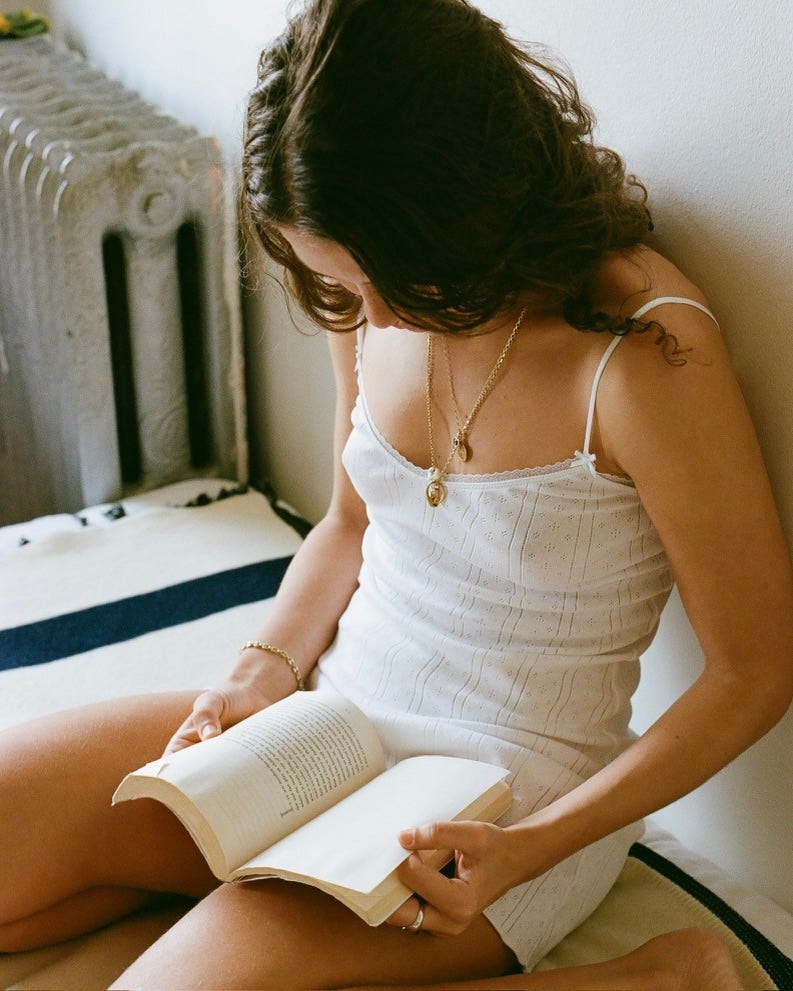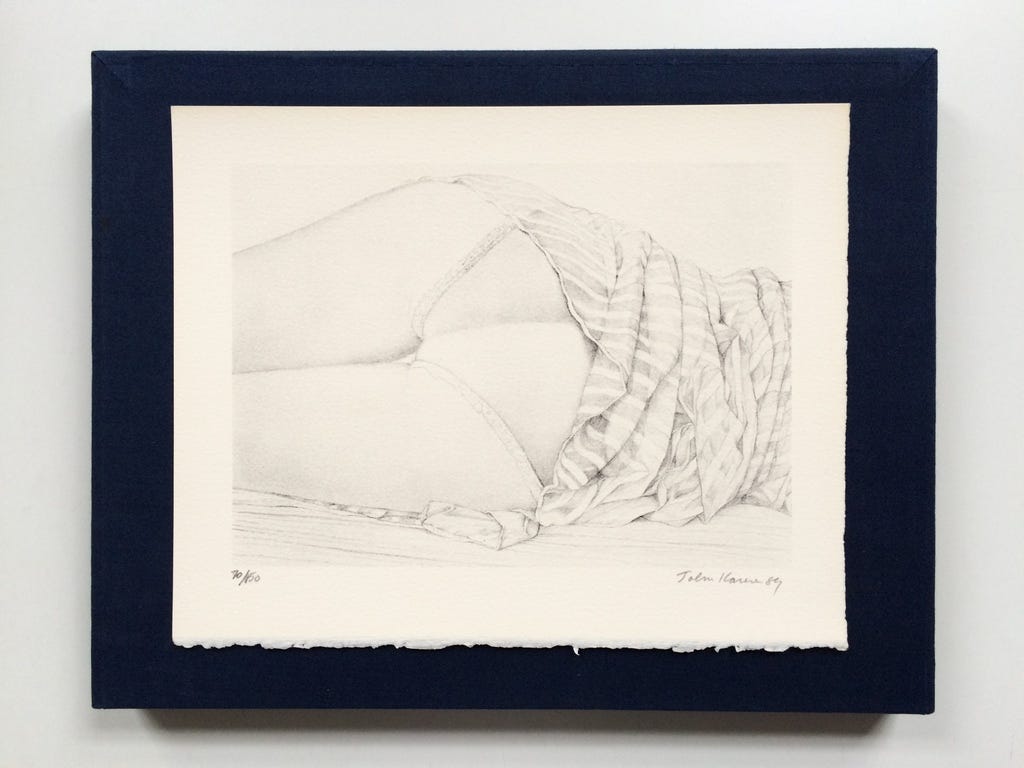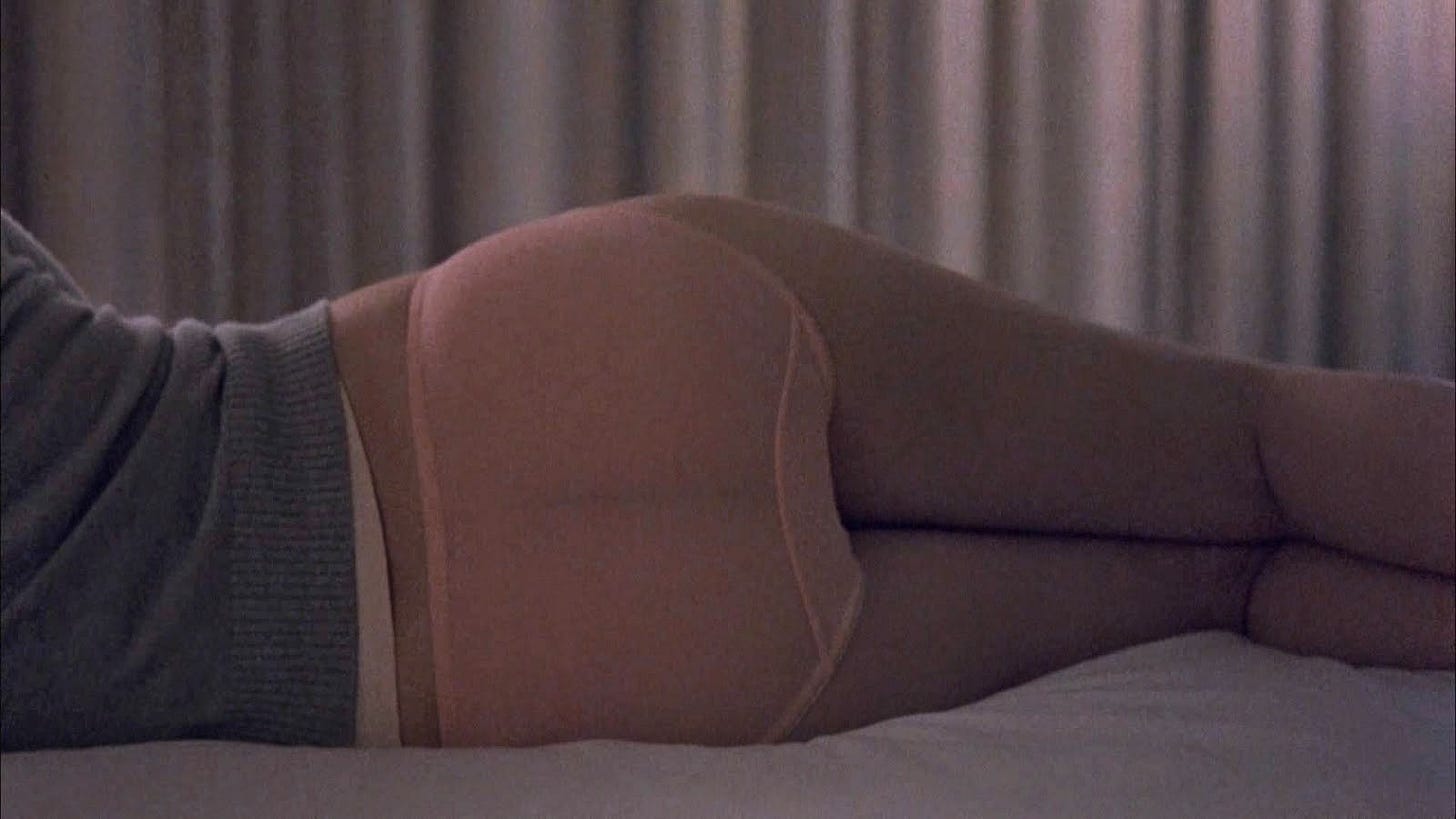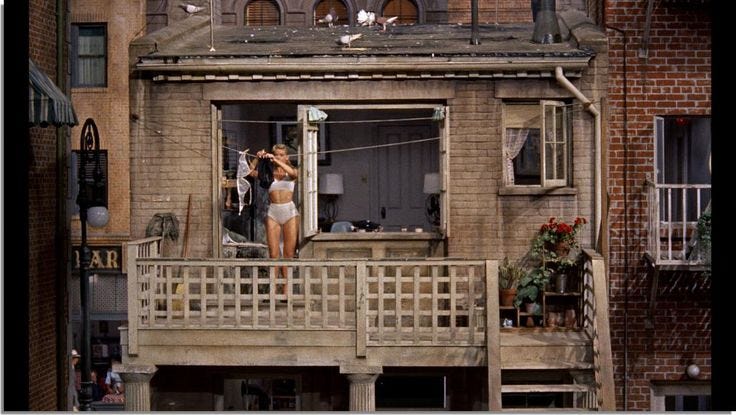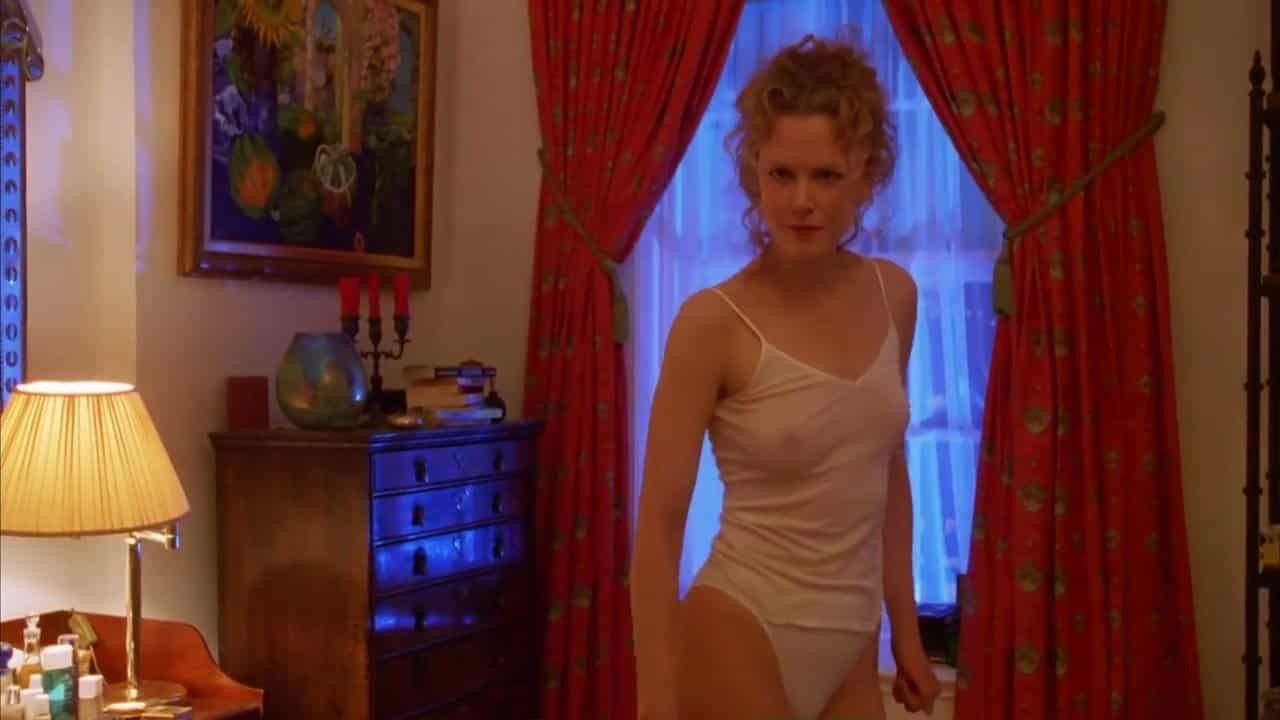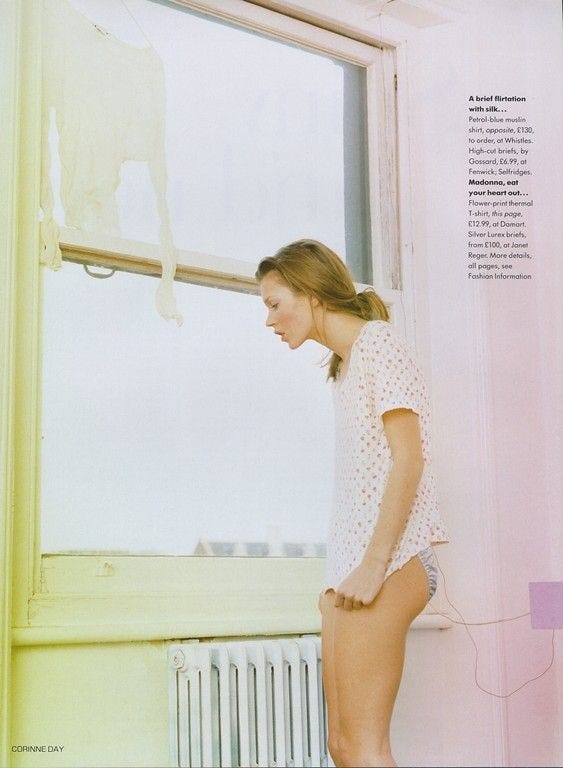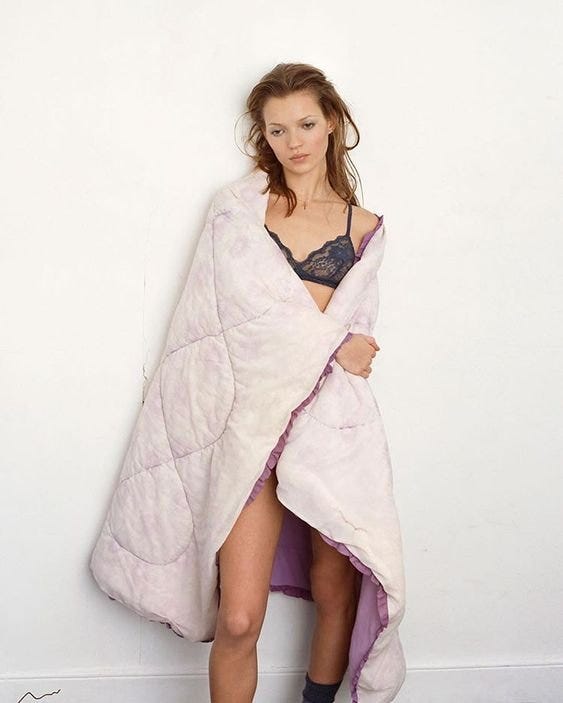John Kacere and Intimate Moments
On underwear in culture, Jean Paul Sartre & embodied experience.
Cou couuuu substack,
If you didn’t already know, it’s a Cou Cou summer. Last week we opened our first-ever NYC pop-up (open until June 8th!!) and introduced our new core collection, Cotton Voile. Think easy, breezy, vintage-feeling summer essentials. Inspired by summers spent on the French Riviera & sunkissed skin.
Nicolaia Rips at i-D interviewed me a few days before the launch and asked me a question that really stuck:
What are your favorite underwear moments throughout pop culture history?
Without hesitation, listing off the ones that had quietly stayed with me. The ones that shaped how I saw femininity and intimacy and, in time, came to shape the world of Cou Cou:
Nicole Kidman in Eyes Wide Shut. That dreamy shot of Scarlett Johansson from behind in Lost in Translation. Grace Kelly in Rear Window. The Corinne Day shoot of Kate Moss in ’93 for Vogue. And John Kacere’s hyperrealist paintings of women in their knickers. I actually have one of his original lithographs framed in our London studio—and brought it with me to New York for our first-ever pop-up. They’re so tender and unapologetic at the same time.
Remembering all these moments that seemed to define, at least in my mind, underwear in pop-culture history, made me think back to those early days of building Cou Cou. The days of figuring out what this new vision or world intimacy even meant, and how to reclaim it.
So many “underwear moments” throughout history felt so voyeuristic in nature: a woman being watched, performed, framed. But the ones I loved were less about being seen than they were about feeling seen. The simplicity of literally just being a girl, when no one’s watching. Something raw, a little tender. Not posing, not perfect. Just being.
I guess I saw something in myself in all these moments, whether it was the soft simplicity of Sofia Coppola’s opening shot of Lost in Translation or Kate Moss by Corinne Day for British Vogue 1993. I felt these images represented something about the essence of real femininity, of what it’s like to be a woman when we’re not performing. They captured something I wanted to capture in the brand world of Cou Cou and how I wanted the product to make us feel as women.
There’s a story Jean-Paul Sartre tells in Being and Nothingness that always stayed with me. I think it speaks so clearly to the shifts we experience as women between embodied presence to the experience of being watched, the ever-present performance we can feel under pressure to adhere to.
In the story, Satre describes someone watching a scene through a keyhole, completely absorbed in what they’re seeing. In that moment, they’re fully present… no sense of self-consciousness, no narrative. Just present awareness, their body and eyes being a means to live the world through. Then they hear footsteps behind them, and everything changes. Their body tightens and they shift from this embodied presence, to the awarness of being watched. From simply being to the awareness (or worry) of being seen.
Am I being watched?
How do I look?
What are they thinking of me?
Should I be doing something different?
I think we all know that shift, particularly us as women. It’s that moment we leave soft, tender presence, when we leave that connection with ourselves and in response to the sense of being perceived, step into performance. We all know that beauty in the sense of what comes before. That quiet, unguarded space of just being with ourselves. And fundamentally, that’s what I wanted Cou Cou to be… the space before the footsteps. A space for that softness and presence. Not performing or posed. Just being, living like no one’s watching. Taking a leaf out of Grace Kelly’s book in the movie Rear Window (1954) and dancing like no one’s watching.
In reflecting on what connected all these pieces—across film, photography, and art—I realised that, in one way or another, they each echoed this story for me. Acting as an invitation to come home to our female, embodied experience. To move from being seen, to feeling seen. From being perceived, to being. So I wanted to share a few of those “underwear moments”. The moments that have lived in my mind and moodboards since the very beginning, that shaped the Cou Cou world and spoke to the kind of real femininity I wanted the brand to embody.
GRETA (1981), JOHN KACERE
I remember the first time I saw Greta (1981)—the painting at the top of this post. It was about five years ago now and it just made an immediate impression on me. Something about it so viscerally celebrates the softness in femininity. A woman lying back, not posed, not “sucking in”. There’s still something oddly radical about that: Showing a woman’s belly without tension, without apology. There was this quiet strength in the way she took up space, unguarded. I think that’s what moved me. It had such an influence on me that I actually bought the lithograph and have it framed in the Cou Cou studio, opposite my desk (and actually brought it here with me to New York to hang in our pop-up as an ode to where it all started).
LOST IN TRANSLATION (2003), SOFIA COPPOLA
Because it’s Sofia Coppola. And because it’s Scarlett Johansson. Aaand because it was also inspired by Kacere’s paintings. A defining moment that captures Coppola’s unwavering commitment to depicting the female experience, unfiltered.
REAR WINDOW (1954), ALFRED HITCHCOCK
Dancing like no one’s watching in your bedroom. Beautiful cinematography. A lesson in how to do your lingerie laundry. What’s not to love.
NICOLE KIDMAN, EYES WIDE SHUT
Honestly, I just wanted this tank. I bought one I thought was like it from M&S, put it on and unfortunately, did not look like Nicole Kidman. SO, we’re making one that’s cuter and fit to perfection in our Cotton Jersey collection. Currently in progress, stay tuned. Coming soon.
KATE MOSS BY CORINNE DAY, BRITISH VOGUE (1993)
Fellow british babe, Kate, in candid moments, captured by Corinne. Unpolished, unposed. Just feels like girls being girls, having fun, taking pictures. Nostalgic of Facebook photoshoots back in the day.
